Piano
Room Placement:
Which Place is BEST
to Maintain Your Piano's
Preservation, Protection, and Performance, to its Highest Potential?
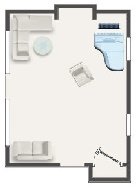
Piano room placement has been said to be a greater critical decision for piano owners, than maintaining and caring for a piano, long-term.
Correct piano room placement can result in achieving the best sound, performance, and most of all, the longevity of your piano during its lifetime, and most importantly, during your lifetime.
On this page, we will discuss both the advantages and disadvantages of different piano placement options, and their respective locations, below.
Several diagrams can be found on this page, showing where to place, and where NOT to place, your piano in a house, room, or building.
- If you are searching for piano caster cups, to protect your floor or carpet, you can buy them, here.
- If you need a piano cover to protect your piano, when placed in the path of direct or indirect sunlight, you may request one, here.
- If you wish to protect the delicate strings of your piano, against the effects of corrosion, or rust, within a coastal or high-humidity environment, you may buy a custom made 100% wool string cover, here.
- If you need a Piano Life Saver system by Dampp-Chaser or replacement parts for your past or present system, click here for more information.
QUESTIONS?...
CALL: (866) 488-5397 (KEYS)
A few general criteria must be taken into consideration, to achieve, maintain, and to enjoy your piano's performance potential, to the fullest extent possible.
Piano room placement for the purposes of this article, is defined as keeping your piano preserved in an excellent aesthetic, structural, and mechanical condition, in the best placement position possible within an insulated room.
While we understand that your piano's placement is affected by the structural and space constraints of your home, institution, or studio, we encourage you to consider the following criterion.
Do not compromise on any more than two of these prohibited placement areas, below, as any more than two 'compromises' can render your piano's sound and condition, lifeless.
The
life expectancy of your piano, including its present condition and performance is greatly
impacted by placement factors, alone, and should be
carefully discussed with your piano technician.
If you do not have a piano technician, please contact us to discuss your situation. We would be more than happy to assist you with your piano's placement.
Pianos must NOT be placed:
- In or around direct sunlight, even for but a few hours per day.
The
accumulated time your piano is in or near the path of direct sunlight can cause
your (1) piano's finish to quickly fade, the (2) soundboard to become prematurely dried out, worn, and cracked, and (3) glue joins to weaken, throughout the piano.
Sunlight shining through a window causes temperatures to rise,
quickly, and the piano's room placement area - internal and external of
the piano - to become heated and dried out in desert climates, or heated and moist in humid climates, both of which are undesirable.
- Near a window.
Windows
can throw off heat, let cold air and warm air in, and are subject to
changes in atmospheric conditions, temperature, and humidity from the
outside, daily. These constant changes greatly cause your
piano's tuning stability to suffer, and cause parts to swell or to shrink, which result in a poor mechanical condition and performance, whereas your piano's preservation suffers overall, at the very least.
- Underneath, on top of, or near air vents.
Similar to being placed near a window: air vents, air conditioners, heaters, and fireplaces all contribute to an unstable environment and climatic ("climactic", quite literally) conditions, around your piano.
While the piano can be compared to a living and breathing organism (aka "real wood"), a good rule of thumb for your piano's placement is:
The less air flow, changes in temperature, and humidity around your piano, the better.
Piano Room Placement:
Which Place, In Which Room,
For Which Piano?
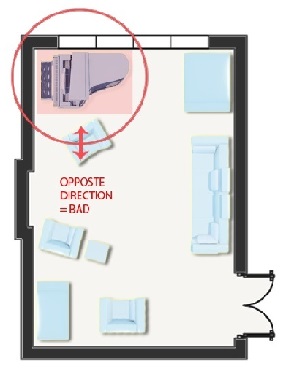
Grand pianos, when placed in a room, are (1) preserved and (2) sound best when the 'straight edge' is placed against an inner wall, away from windows and air vents.
The same holds true for upright pianos, which should be placed on an inner wall, away from direct sunlight, windows, and air vents.
Also, grand pianos should be positioned so that (a) the pianist can look into the room (and not into a wall), and (b) the bass side of the piano (left, straight edge) runs parallel to the wall.
This
placement enables the bass (low frequency sound) to bounce from the wall, into the room, and the
treble to be projected clear out into the middle of the room, to achieve the best sound.
A grand piano can also be placed at a 45 degree angle, 1/3 or 1/5 of the way between a diagonal corner.
If
you were to turn your piano the other way around - where the bass side is placed near the center of the room - and the treble ("open lid") faces the wall
(or a corner of the room), this may help to quiet the sound, to a greater or lesser extent, but ultimately, this position causes a harsh, stifled sound, since the treble is being
bounced against the wall - exactly where the bass
needs to bounce from - whereas the treble is unable to carry and to project out into the center of the room, for the greatest clarity of sound.
The diagrams below illustrate correct piano placement options, in particular, in a small or a large room.
The first diagram seen above is for grand piano room placement. However, in the same large room, the image below (piano seen in RED) represents improper piano placement.
If there is no space - or few to zero options - for the piano's room placement due to the house's design and/or physical space constraints, a floor length piano cover may be necessary and is highly recommended as one of many tools of preservation, by piano technicians and manufacturers.
Assuming the walls seen below are an inner wall, this is a good first step toward placing the piano away from windows and sunlight. Vents, doors, and air flow is another issue.
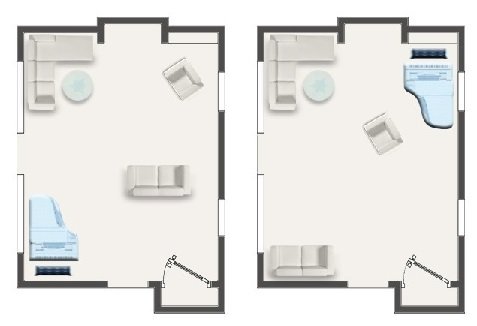
Pianos should be placed away from air intake vents, as the constant move and flow of air currents of different temperatures and humidity levels can cause premature deterioration of your piano's structural components and its mechanical, and yet delicate, parts.
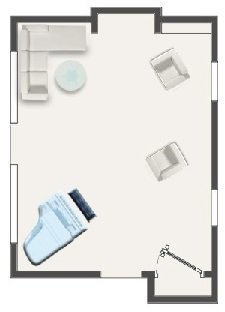
The image to the left is an example of 'bad' piano room placement, and can also be seen in the image below. In both examples, the (1) piano's treble is reflecting off a wall, (2) the bass side is not aligned against a wall, and (3) the pianist cannot see into the room.
While these positions may vary, depending on (1) the layout of your personal room and space options, and may (2) slightly quiet the sound of your piano, one significant factor remains:
The piano is positioned out in the open, with no significant physical 'room support', to produce optimal sound and physical protection.
Rare acoustical exceptions of placing a piano in the middle of a room are the following: Hard wood floors and/or high ceilings, and optimal acoustic surroundings, specifically, materials added to the walls that are conducive to sound amplification and continuation, or the opposite.
If the piano is equipped with a climate control system, placing a piano in an open environment, namely, in the middle of a room, along with a cover, is somewhat permissible.
It is always best to bear in mind the rule when deciding where to place your piano:
The less air flow and atmospheric changes around the piano, the better. Tuning stability will remain relatively constant and structural deterioration, less accelerated, over time.
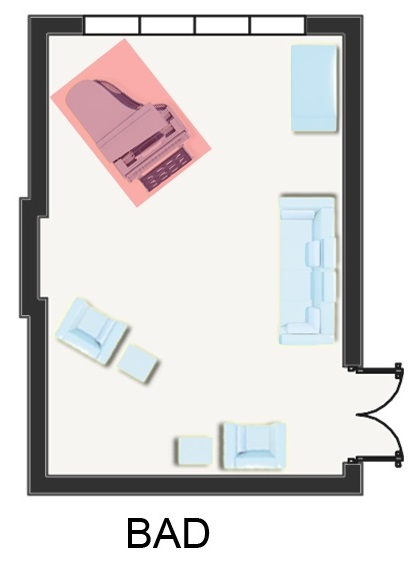
A home or building's inner walls and carefully controlled atmospheric conditions are a piano's best friend.
When the two criterion above cannot be met, a floor length piano cover and humidity control system become increasingly necessary.
Pay a few cents per day, up front, for such protective and precautionary measures, and you will save $1,000s in rebuilding costs, later.
If you are considering purchasing a new piano, or bringing a piano into the home, after reading this article, try to locate or make a piano space template.
Visit a piano dealer. They will loan out - often, for free - a piano space template to help you decide which is the best place and space, to position your piano, before it arrives.
Taking this one measure alone, in the beginning, can save you a tremendous amount of moving and maintenance costs, before it is too late.
Or, visit a dealer and measure the distance, on an existing piano, where caster cups can and should be placed, before your piano arrives.
Piano Room Placement:
Where to Position Your Upright Piano
Upright piano room placement is slightly different and less involved than grand piano room placement.
Upright pianos should be placed against an inner wall, away from direct sunlight, air vents, doors, and windows. These measures help to preserve your piano's overall condition, tuning stability, and longevity.
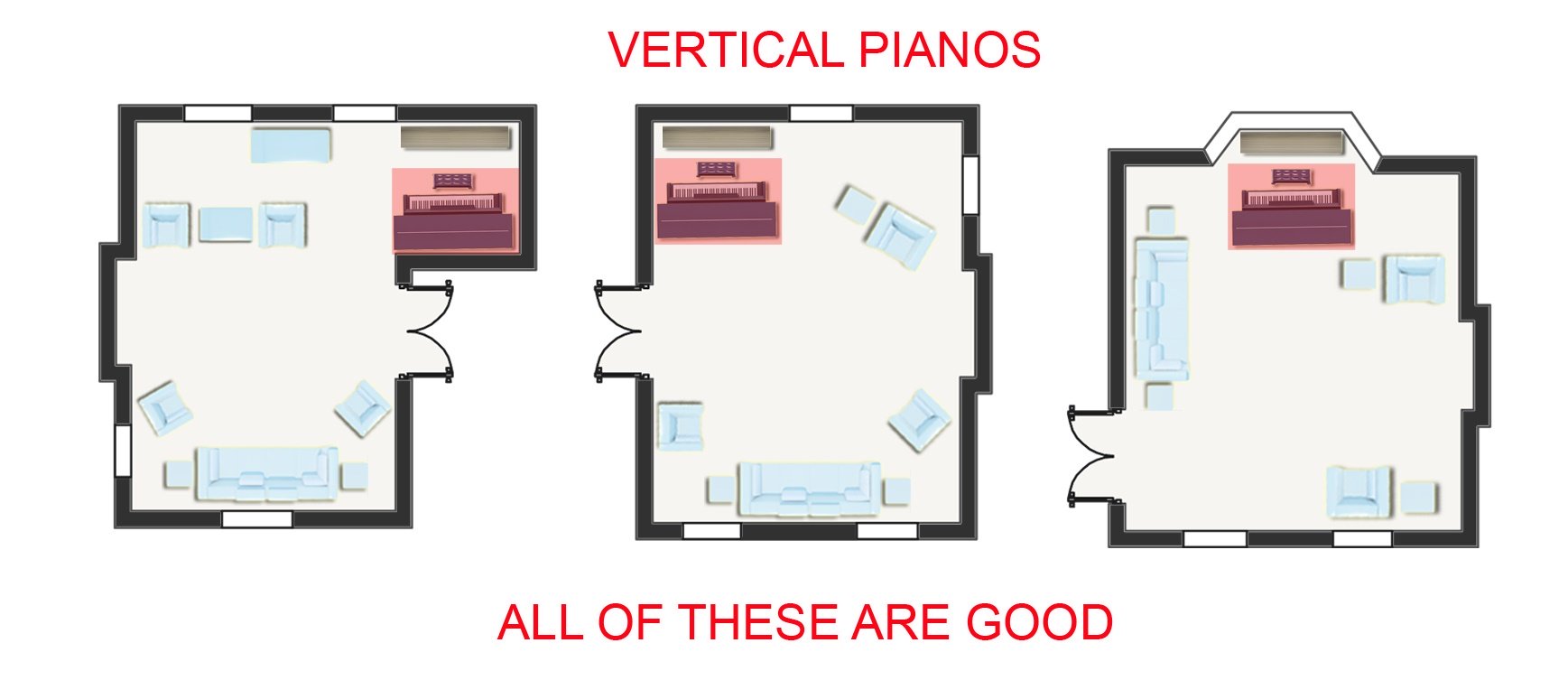
The majority of sound from an upright piano comes from the back of the instrument. The soundboard is openly exposed from the back, which reflects in greater measure the small portion of sound which also comes from the piano's (1) top lid and (2) front bottom board, as these two places are slightly opened by a small gap.
On most studio upright pianos, the top lid is allowed to stay open by means of a lid prop, which allows for more sound to come through this channel, in fuller measure.
The diagram above shows three good examples.
Let's discuss the first diagram, to the left.
- In the the first diagram, the upright piano is placed against an inner wall. It is positioned away from windows and air vents, and is situated in an inner portion of the home.
- The middle diagram shows the piano's back facing into the room. In this position, more sound can be heard, both by the pianist and by listeners - from anywhere within the room.
A carefully cut liner can be placed by Velcro strips onto the back of the piano, to cover the unsightly beams of the piano's architecture. The liner allows for sound to come through, with no hindrance.
In the middle diagram, optionally, the piano can be placed against the wall to the left, assuming it is an inner wall.
Arguably, outer walls, are the same as placing a piano in the middle of an open space.
While placing an upright piano against a wall quiets the sound and gives a greater amount of protection than an open space, an outer wall is better than no wall, at all.
While an inner wall is always best...
- The last diagram, on the right, shows the upright piano facing into the room, in an open space, placed away from walls.
Placing an upright piano in this position, generally speaking, allows for the greatest amount of sound to come through and travel, in a room.
A cover and/or humidity control system is best utilized in this scenario, to achieve the best protection.
Piano Room Placement:
In Conclusion
The best options for piano room placement - or, no adequate options for piano room placement - equally boil down to one main factor: care and consideration.
If you have the ideal setup and space to place your piano in a carefully selected spot, excellent.
If you DO NOT have an ideal setup and space is limited to place or position your piano in a carefully chosen environment, take these precautions:
- Invest in a piano cover.
- Invest in a piano string cover.
- Invest in a climate control system.
Invest in mini-blinds, drapes, UV blocking and heat blocking window film/tint or treatments, vent covers, and/or blankets, and make the best of your current situation.
Choosing to invest in any one of these options - the correct space option, or the correct 'staple' - results in a better protected and preserved piano.
Choosing NOT to invest in any one of these options results in a severely worn, damaged, and ultimately, a prematurely 'deteriorated' piano, one that will cost you (the piano owner) more money to maintain and repair, as a result.
Make the best decision possible, and accept all of the necessary precautions and procedures to place your piano in a suitable and sustainable environment, so that you can enjoy your piano, long-term, for decades, unscathed.
You can find more tips on how to make your piano room sound "grand", at PianoBuyer.
SUBSCRIBE TO OUR FREE EZINE:
Support our site at no cost to you. Make your Amazon purchases by clicking through this link, here.


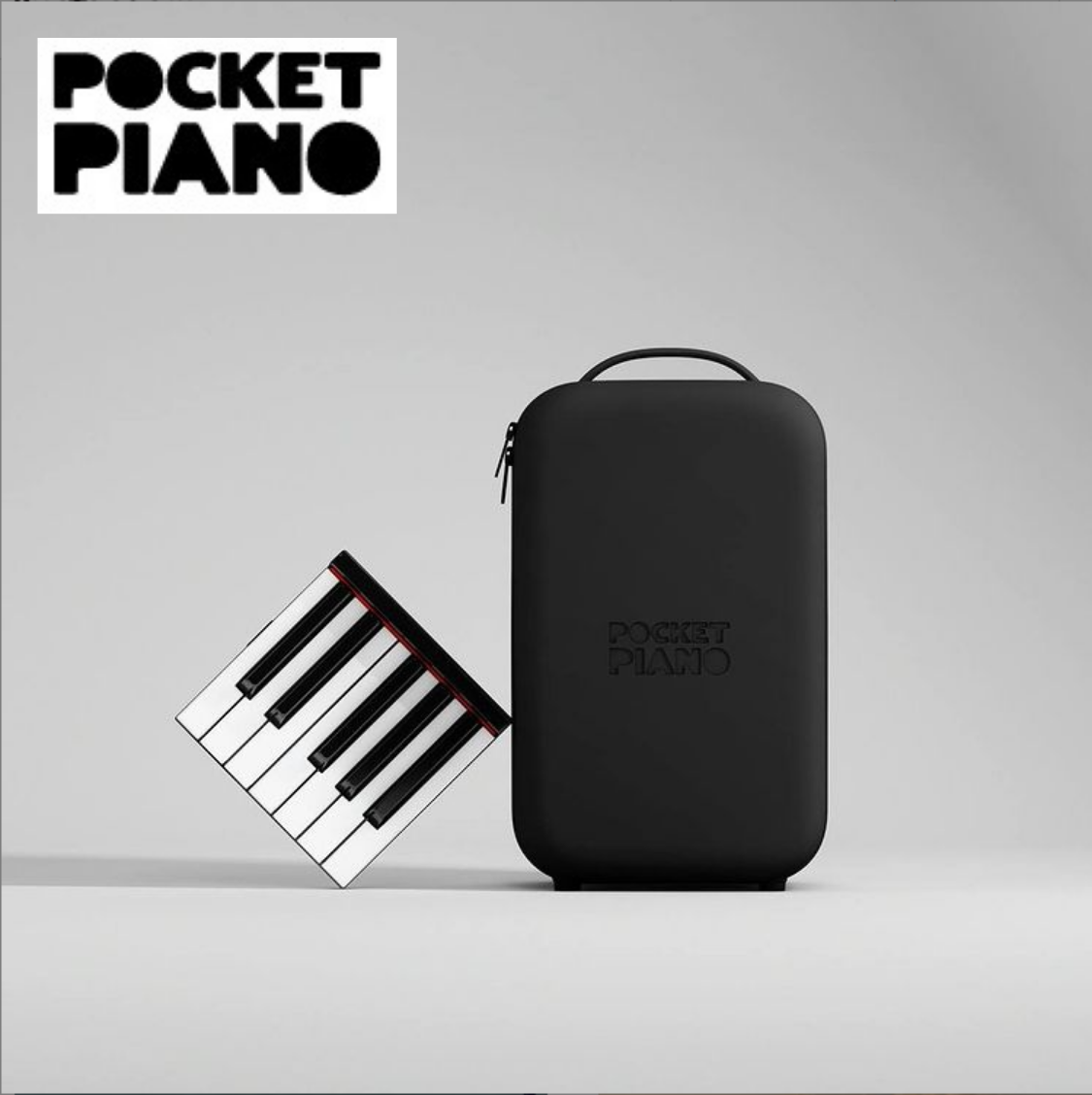

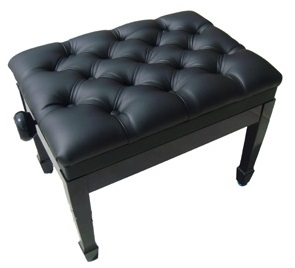


 Click Here to View our Terms and Conditions
Click Here to View our Terms and Conditions